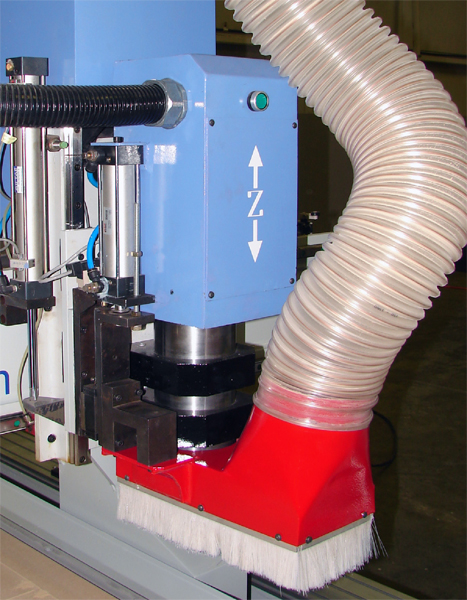Question
I am fairly new to CNC routers, and have a 4x8 machine with a vacuum table. 3/4 material holds down really well depending on the quality of material. I thought thinner material since it is more flexible would makes a better seal and stick to the table better but that doesn't seem to be the case. The thinner the material the easier is moves on the table. You can see the material (1/4) getting lifted by the cutter as it moves (compression spiral) and switching to a downshear tool helps. It doesn't fix it, but should that even be necessary? Is this situation I describe normal?
Forum Responses
(CNC Forum)
From contributor W:
Yes that is normal.
Things you can try to improve the situation are sealing the edges of the spoilboard and making sure the entire spoilboard is covered with material (unused areas turned off if you have zones or cover with plastic laminate if not). This will help with your vacuum efficiency. Keeping the table free of dust is critical. Dust provides very small spaces for air to get in under the sheet, and also acts as tiny ball bearings for the material to "roll" on.
Otherwise, try starting with flatter material, or if that is not possible perhaps you may be able to screw down the corners of the sheet in an area of waste. I often write a drilling program to locate 5mm holes, run it and use bright drywall type screws (non-hardened) to screw the part or the scrap or both to the spoilboard to prevent movement. Then I can call a cutting program and be sure I will not hit screws.
Being judicious about the cut order is a skill you will need to build over time and can be very important to keeping parts stuck to the table. The goal is to keep a part attached to the scrap until the very last portion of the cut so you minimize movement. This can get tricky with a lot of parts to a sheet, cut order and start and end points make a big difference in some applications.
Support tags are another machining strategy that can help with this as well as onion skinning, although if your sheet does not touch the spoilboard in areas due to warp these methods will fail.
